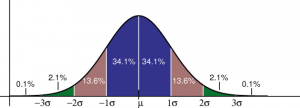 Reply to Ross Mounce
Reply to Ross Mounce:
1.The affordability problem loses all of its importance and urgency once globally mandated Green OA has its dual effect of (i) making peer-reviewed journal articles free for all (not just subscribers), thereby (ii) making it possible for institutions to
cancel subscriptions if they can no longer afford -- or no longer wish -- to pay for them:
2. "If and when global Green OA should go on to make subscriptions unsustainable (because users are satisfied with just the Green OA versions) that will in turn induce journals to cut costs (print edition, online edition, access-provision, archiving), downsize to just providing the service of peer review, and convert to the Gold OA cost-recovery model. Meanwhile, the subscription cancellations will have released the funds to pay these residual service costs."
3. In other words, it is
global Green OA itself that will "
decouple the scholarly journal, and separate the peer-review process from the integrated set of services that traditional journals provide." (And then the natural way to charge for the service of peer review will be on a "no-fault basis," with the author's institution or funder paying for each round of refereeing, regardless of outcome [acceptance, revision/re-refereeing, or rejection], minimizing cost while protecting against inflated acceptance rates and decline in quality standards.)
4. Because of the Gaussian distribution of virtually all human qualities and quantities, research quality and quality-assessment is not just a 0/1, pass/fail matter. Research and researchers need the much more nuanced and informative hierarchy of quality levels that journals afford.
5. Please don't conflate the simplistic reliance on the journal impact factor (the journal's articles' average citation counts) -- which is not, by the way, an OA issue -- with the much more substantive and important fact that the existing journal hierarchy does represent a vertical array of research quality levels, corresponding to different standards of peer-review rigour and hence selectivity.
6. This hierarchy is already provided by the known track-records of journals, and can and will be enhanced by a growing set of
new, rich and diverse
metrics of journal and article quality, importance, usage and impact. What authors and users need is not just a "
Gold OA plot" but a clear sense of the quality standards of journals.
7. I think it is exceedingly unrealistic and counterproductive to advise researchers to simply give up the journal with the known and established quality standards and track-record for their work in favour of another journal just for the sake of making their paper Gold OA (let alone for the sake of freeing it from the tyranny of the impact factor) -- and especially at today's still vastly-inflated Gold OA "publishing fee," and whilst the money to pay for it is still locked into institutional subscriptions that cannot be cancelled
until/unless those journal articles are accessible in some other way.
8. That other way is cost-free Green OA. And it is global Green OA self-archiving of all journal articles, published in the journal with the highest quality standards the author's work can meet -- not a pre-emptive switch to new journals just because they offer Gold OA today -- that will make those journal articles accessible in the "other way" that (i) solves the accessibility problem immediately, (ii) mitigates the affordability problem immediately, and (iii) eventually induces a transition to Gold OA at a fair and affordable price.
9. Today (i.e., pre-Green-OA), Gold OA means double-pay -- whether for hybrid Gold OA, or for pure Gold OA, as long as subscriptions must still be paid too.
10. It is short-sighted in the extreme to wish authors to renounce journals of established quality and pay extra pre-emptively to new Gold OA journals for an OA that they can already provide cost-free today through Green OA self-archiving, with the additional prospect of easing the affordability problem now, as well as preparing the road for an eventual liberation from subscriptions and a
leveraged transition to affordable, sustainable Gold (and Libre) OA.
Harnad, S. (2007) The Green Road to Open Access: A Leveraged Transition. In: Anna Gacs. The Culture of Periodicals from the Perspective of the Electronic Age. L'Harmattan. 99-106.
Harnad, S. (2009) The PostGutenberg Open Access Journal. In: Cope, B. & Phillips, A (Eds.) The Future of the Academic Journal. Chandos.
Harnad, S. (2010) No-Fault Peer Review Charges: The Price of Selectivity Need Not Be Access Denied or Delayed. D-Lib Magazine 16 (7/8).
Harnad, S (2012) The Optimal and Inevitable outcome for Research in the Online Age. CILIP Update September 2012
 Reply to
Reply to 

